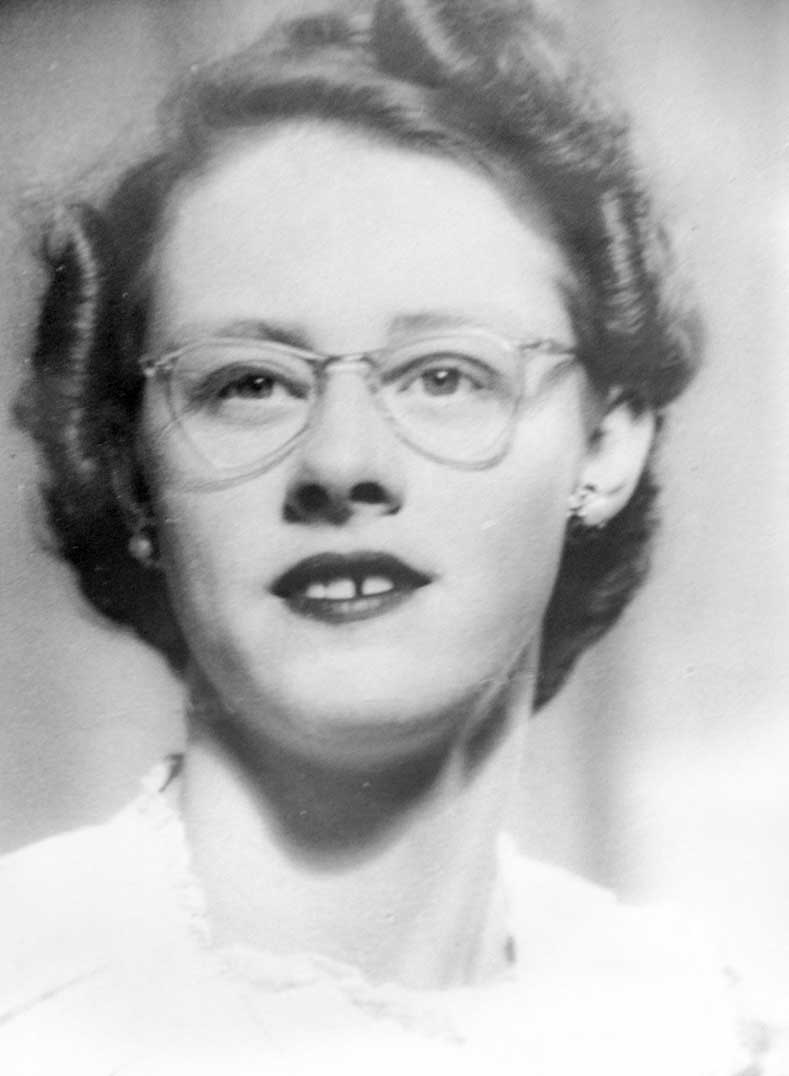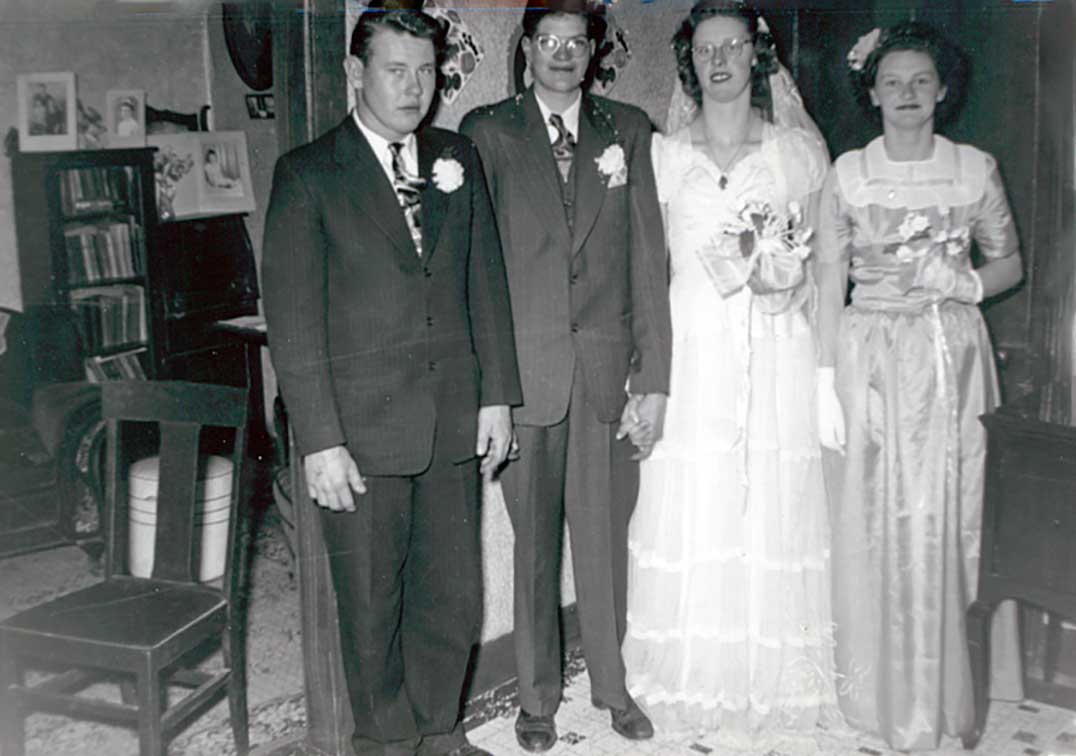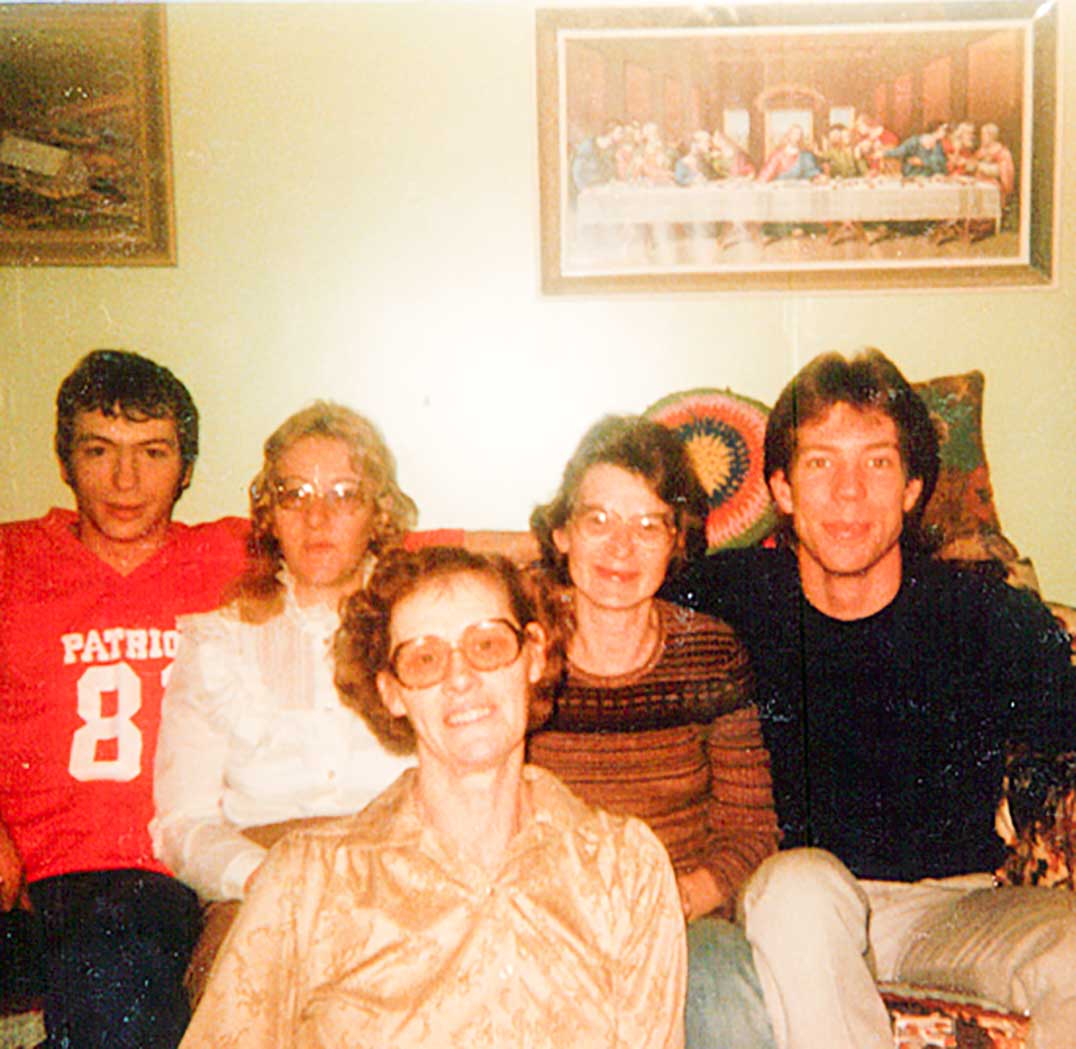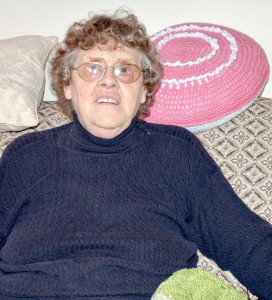By Petra Wall
Madeleine Charlton
Madeleine’s proudest day, after the occasion of her marriage to John Charlton, was November 17, 1991, the very day she was ordained as a minister in the Community of Christ Church in Little Current. “I was a pastor for much of my adult life. I have performed many weddings on and off the Island, and many funerals as well. It has been an extremely satisfying role. There is another side to this work. Funerals are often a time of sadness and reflection for most,” Madeleine admits. “For the weekly sermons, there is also the need for a writer’s inspiration. Creating a meaningful message each week can be both thought provoking and challenging.”
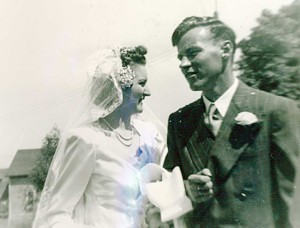
Maternal grandparents Evelena and CP (Guy) Doan owned a farm about three miles from Ten Mile Point. “My grandfather Doan hailed from Manitoba where my mother was born, and he settled on Manitoulin.” Paternal grandparents Harriet and John Jaggard came from Norwich, Ontario when her dad was two-years-old. “John was a blacksmith and I distinctly recall the old barrel butter churn on their farm.”
“Harriet died before I was born and John died four years later. By 1935, I lost three of my grandparents. My maternal grandfather, CP Doan who died when I was nine, is the one I remember. Today there aren’t too many of the original settlers left in this area. The land is shallow and not ideal for farming. My dad, Francis (Guy) Jaggard, went west to help with the harvest one year before he married Evelene Doan and returned to Manitoulin. Ten Mile Point is more of a tourist area today, a Native art and craft store having replaced the Ten Mile Point Lodge at the lookout spot.”
Madeleine made her first appearance, at seven pounds, on December 9, 1931 on the family farm near Ten Mile Point. She was the eighth and last child of Guy and Evelene. She was named after Madeleine Myers, her mother’s good friend and neighbour. It was Bessie Heise, a midwife, who delivered her when Dr. Simpson couldn’t get there in time.
Two of her older siblings had died unexpectedly. Iris had had double pneumonia at eight months and Beulah had suffered a ruptured appendix at age six. “I was just a few months old when Beulah died.” Other siblings were Violet, who later married Fred Hubbard, and then Bob McAllister after Fred died; Harry who married Gladys Viney; Lillian who married Charlie Viney; Bessie who married Jim Lockeyer; and lastly Florence who wed Walter Lenson. “Florence is my last remaining sibling.”
“We all had chores like cleaning the stable, fetching water from the well and carrying it up the hill to the house. There was no indoor plumbing. One of my first memories is carrying wood into the house and dropping a big chunk of wood on my foot. I started to cry and my older sister said, ‘don’t cry, you are an auntie today.’ It seems my oldest sister Violet had just given birth to her first baby. As a new aunt, I had to be older and more responsible than my niece, so I stopped crying.”
Madeleine and her sister Florence walked to the Ten Mile Point school, located on a side road two-and-a-half miles from their house. “Walking to school was just part of life at that time. We took it in stride. Today that school is a home, but back then it sheltered all the local kids. My first teachaer was Grace Lowrey. The school closed when I was in Grade 5 because there were just six or seven of us left. I took government lessons at home for Grade 6. In Grade 7, two of us boarded in Sheguiandah and went to school there. I remember smoking my first cigarette in Grade 8.”
Cross-country skiing was a favourite sport. “I had one pair of skis and they worked for downhill and cross-country. There were always hills on the trail, so you needed to be skilled for both options. Fridays, after school, I often skied home and then skied back to the boarding home Sunday night.” Geraldine (Dean) Batman ran the home.
The Sheguiandah school later became Howland Township’s council chambers and a new school with three classrooms was built. This building was also fated for other purposes. It would house crafts from angora goats, and later yet, it became the Rainbow Apartments on Hwy 6, still there today. High school was in Manitowaning where Madeleine’s parents had just bought a house. “I left high school after two years due to health issues. In Grade 10 I broke my arm, had my appendix out, had a bad flu and fell, damaging my knee. I missed so much school that I didn’t want to go back.” Madeleine got work at the Evergreen Inn in Manitowaning and also at the Black Rock Lodge in Hilly Grove. She did some housework as well.
Madeleine does not remember the day she met John. “He was always there,” she insists. The kids were curious too. John liked to tease them with his own version, ‘Your mother grabbed a butcher knife and said to me, ‘marry me or else’!’ That was always a private joke just between him and me for many years until he finally told our daughter Pat one day. It was far from the truth but we enjoyed their reactions. I liked that John was tall like me, good looking too and very nice.”
The couple married on March 22, 1950 when Madeleine was 18. John was also the youngest of eight children. He had worked at various odd jobs, including in the tobacco fields of southern Ontario when he was younger. He had stripped leaves manually and stored them in tobacco sheds for drying.
“That first summer in 1950, he was the assistant lighthouse keeper at the Duck Island Light. We spent our summer running the lights, eating hazelnuts and strawberries, exploring the shoreline and maintaining the property. One of the most plentiful items that washed on shore, besides wooden floaters, strangely enough, were oranges.”
Bob and Loretta Leeson were there too. Bob was the main lighthouse keeper and John his assistant. The summer before, Bob and Raymond Hughson had been shipwrecked coming home from Duck Island in December of 1949. Luckily, both men got safely back to shore. The Leesons had two small boys and two dogs. “We all had a good time that summer. We were allowed to use a small net to fish since we were so far from a store.” Bob and Loretta would head back to the mainland to get groceries and mail every two weeks. John never left the island until December that year.
The search light ran on a pulley that had to be hand-wound every hour or so to keep it turning. The wick had to be trimmed and the lenses polished. Oil had to be pumped up to the light. Once the men forgot to turn off the pump and the oil began to run back down, making quite a mess. “There were four landings and 97 steps to the top. It took me a while to get used to that many steps but after a couple of months, I could run up or down with no problem.”
Each lighthouse had its own pattern of lights and sounds for the fog horn. Duck Island had three blasts and a break for both the light and the fog horn. Ships needed to know their location, especially in the fog. Duck Island warned boating traffic of lots of rocks.
Madeleine had a stuttering problem much of her early life. The stuttering ended with her marriage. “John helped me overcome this affliction by calming me down when I was agitated. He just touched my arm or my shoulder and I could talk without difficulty. It was wonderful. I give him 100 percent credit for that. He also insisted that his wife should not be a smoker, even though he smoked cigars, pipes and cigarettes he had rolled himself. I quit smoking.”
In 1951 the couple bought a farm in Bidwell. “I was working at Stella Sim’s store in Manitowaning. John had been working at Harry McMullen’s sawmill but he wanted a farm of his own. He quit that job when he bought our 200-acre farm. We started out with three cows, two pigs and a few chickens. In 1954 we bought my parents’ farm near Ten Mile Point, Mrs. Charlton explains. “It was a bigger farm with better buildings and it had hydro.”
In 1955, the couple fostered two little girls, Patricia and Cheryl, aged three and five. “There were six kids in the family and we were asked to take two of them. We were able to adopt them a year later. In 1963, a two-year-old boy, Ed, was added to the family and a year later, John, eight-days-old, was adopted. After that John Sr. joked with the social worker, ‘Please don’t come back’ he bid her, smiling. I guess he felt four kids were enough.”
It seems oldest daughter Cheryl had been born prior to their marriage so John, harbouring a good sense of humour, would use this fact to tease his wife. “He would jokingly refer to our wedding day in connection with Cheryl’s age while chatting with a visitor and then walk away and let me explain it.”
“I learned to milk 10 cows on our farm, at first by hand and later with a milking machine. Haying was done each summer and fall. John would get the bales on the wagon and I would build them up on the flat deck.” The kids took turns driving the tractor and helping with the haying. At the barn, Madeleine would get the bales on the elevator that transported them up to her husband at the top of the barn. Eventually hundreds of bales were stored for winter.
“One summer one of the girls, 13, was driving the tractor when she was distracted by the dog. Her foot slipped off the clutch and she fell. It appeared that the tractor wheel went right over her head but luckily, she sustained only a broken arm. Even her glasses survived. We were blessed.”
“Dr. Bailey, who had come to town in 1948, was our doctor for many years. When Ed was six, I brought him to see Dr Bailey. He examined him and then wrote out a prescription. ‘What’s that?’ young Ed demanded while gazing at the squiggle on the paper. ‘That’s me,’ the good doctor replied, smiling. It seems doctors liked to add some mystery to their prescriptions even back then. One thing Dr. Bailey used to say was, ‘The faster I go, the behinder I get.’ He was often busy from morning to late at night. Sometimes neither Dr. Bailey nor Dr. Henry could get to a birth in time, then the nurses, Jean Cunningham, Marion Henry and Alice Monkhouse, would deliver the babies.
“I remember getting a ticket from the police one day. I was pulling out from a parking spot in Manitowaning but my vision was obstructed by a potato chip truck. I slowly drove out and managed to cut off a police car. He turned on his flashers. I pulled in again and he insisted that I ‘had failed to yield’ to an oncoming car in my lane. The matter was explained and resolved but my oldest son went to school and told his class that his mother was in court paying a ticket. He insisted that the officer had blown his horn to stop her and then gave her a ticket.” Madeleine had been hoping she could quietly resolve the matter without all the commotion, but it was not to be.
Madeleine continued to work for Scotty and Bernadette’s lodge at Ten Mile Point. “I baked for the tourists and cleaned cabins. I could also do upholstery.” At home she knit, embroidered and sewed clothes for herself and the girls.
After 1977, Mrs. Charlton worked at the Manitoulin Health Centre in their laundry area. The farm work was not providing enough revenue, especially since John’s health had begun to fail. She remembers the encouraging words of the nurses: “if it weren’t for you, we wouldn’t have fresh linens up here and then we wouldn’t be able to do our job.”
Madeleine was working in the laundry in August of 1989 when John suffered a serious stroke. “Our son rushed him to the Manitoulin Health Centre and then he was airlifted by helicopter to Sudbury. Sadly, he died 12 days later on August 13. He was only 64-years-old. “We had been married for 39 years,” she confides. “That first night after he died and I came home from Sudbury, I noticed our dog Echo, a Scottish collie, was acting strange. She had been close to John and she seemed to know her master was gone.”
The new widow moved into Little Current in 1990 and sold the farm a year later. In 1993 she retired and started to do volunteer work. “Two years earlier, I had taken a course from Palliative Care Sudbury in Mindemoya, so I could assist with end of life support.” My ministry background was beneficial as well. “Both Humphrey Beaudin and my brother-in-law, Vern Charlton, were ministers and inspirational role models for me.”
Madeleine had performed many weddings and funerals as a deacon. She was also a nursery school volunteer in Little Current, assisting parents who had to participate but could not get time off work. She worked with the hospital auxiliary, running the tuck cart and did some fundraising. “As pastor, I gave service on a Sunday of Haweater weekend one year. In 2014, I provided my last Christmas ceremony at the Manor and the residents seemed to enjoy it. I was a regular volunteer there, as I was for palliative care, the Hospital Auxiliary, and the hospital board. I was also part of the Ministerial Association in Little Current.” Mrs. Charlton was a member of the Little Current Place Housing Board. Eventually her health forced her to slow down, but she continues to do some volunteer work for the hospital auxiliary.
In her youth, Madeleine had few resources for travelling, and not much time. “I was just raising children and working.” She was older when she travelled to England to attend her great nephew’s wedding as a minister, reading the scriptures for him. She has also visited a Manitowaning school chum in California, Masie McKinnon.
“I travelled to Independence, Missouri, the headquarters of our church for a world conference. Alberta has been another destination, by car, to see the kids—the last time was in 2011. I have been to every province except Newfoundland. In my kitchen, I have 18 spoons from all these places.”
The Charlton children have gone their own ways. “They are all so different but I love each one of them.” Cheryl White lives in Manitowaning. Patricia Lankert is in Calgary where she does office work for a food supply company. John works at a cattle feedlot in Brooks, Alberta and Edward lives in Newmarket. He works in the property division of Imperial Oil, cleaning sites to correspond with environmental guidelines. “I have 10 grandchildren, 10 great-grandchildren and three great-great grandchildren with one more on the way.”
Madeleine has COPD now (Chronic Obstructive Pulmonary Disease) and she feels it may have been exasperated by her husband’s smoking. The VON and Bayshore offer their assistance when required. “Generally I am healthy. I have a wonderful neighbour, Terry Noland. He gets my mail for me. He shovels the driveway and does lots of extra jobs. Recently he drove me to Manitowaning when my son-in-law died. I don’t know how I would manage without him.”
“Our family has never had a lot of money so, although I live modestly, I have never felt deprived. I love spring and fall best; these months are very relaxing for me. Spring is a time for new growth. I recall some special times when the kids were growing up. Watching them change from one stage to the next was so meaningful for me. I also enjoyed my little quiet times with the kids, when we would just sit and share ideas. My only regret is that I had to work hard and sometimes that meant I had less time and patience for them.”
“What are my strengths? I guess I would like to think I am a compassionate listener which has put me in good stead both as a pastor and within the palliative care world. I feel good doing my end of life work for others. People tend to be very appreciative and that is so rewarding.” The Little Current resident also knits for charity. She knits mitts for school kids. “I make vests and baby blankets for overseas. The Mennonite Church in Stratford distributes these to places like Honduras.”
“Manitoulin has always treated me well,” she concludes. “Be kind to people and they will be kind to you. I’ve never really lived anyplace else, except on Duck Island that first summer after we married. I had the chance to move to Calgary once, but I like it here. The privacy and the quietness are unique. I have six nieces living nearby and a wonderful network of friends. I am not afraid of death. My faith in God has sustained me though my life. The United Church is very important and I try to go every Sunday. Occasionally, when I can’t get out, I watch services on television. I continue to read and study as I have always done. I am very happy and content to live here in my community of Little Current.”
“If God is with me, who can be against me?” (New Testament)

